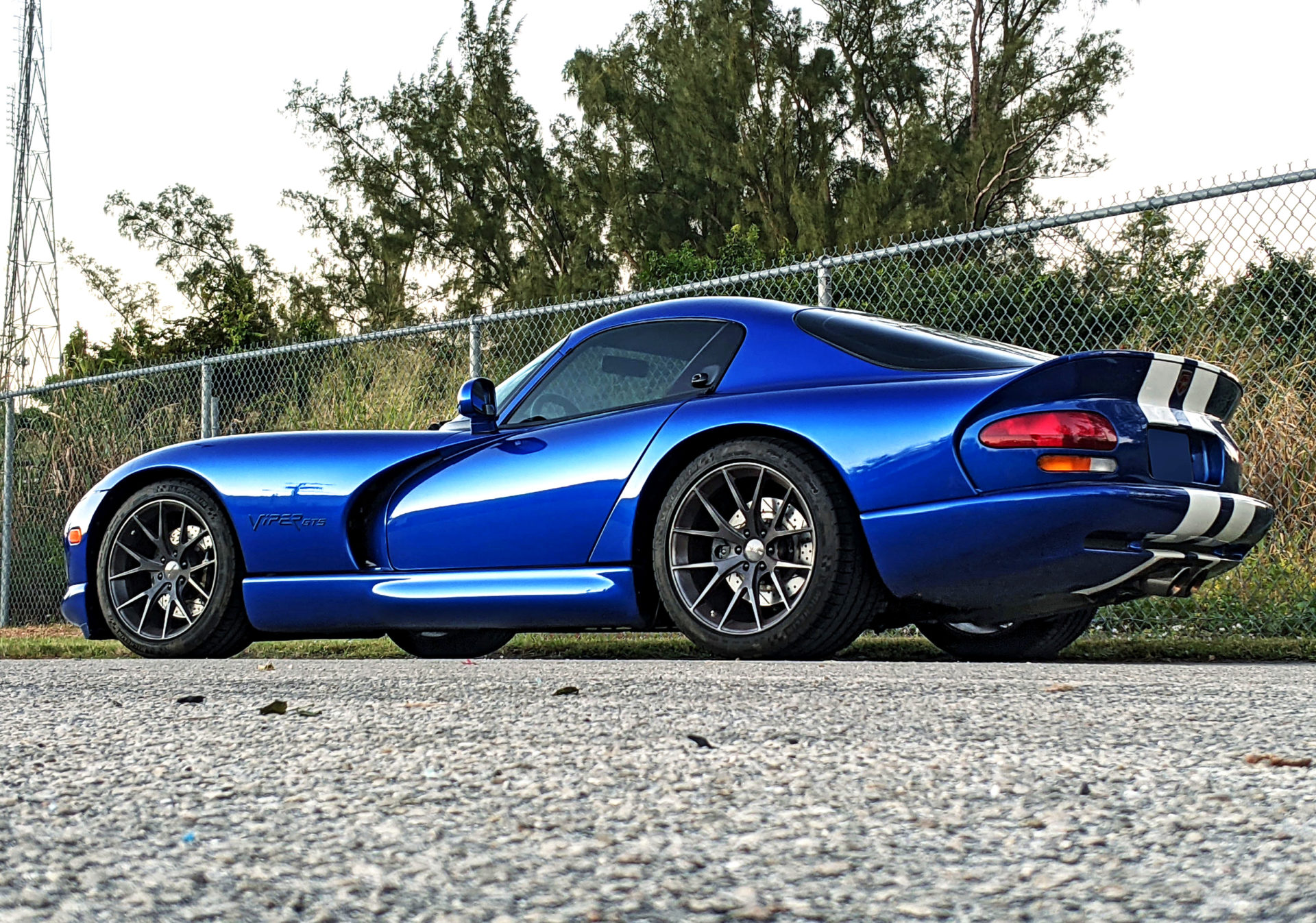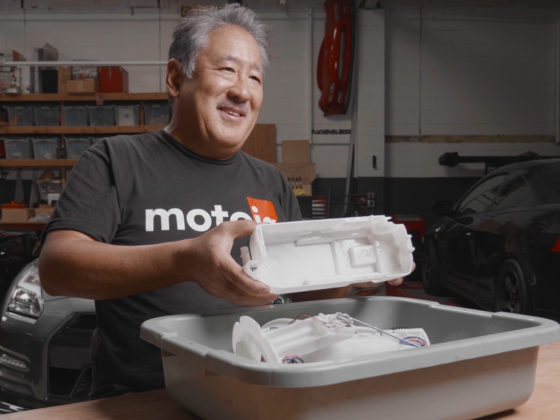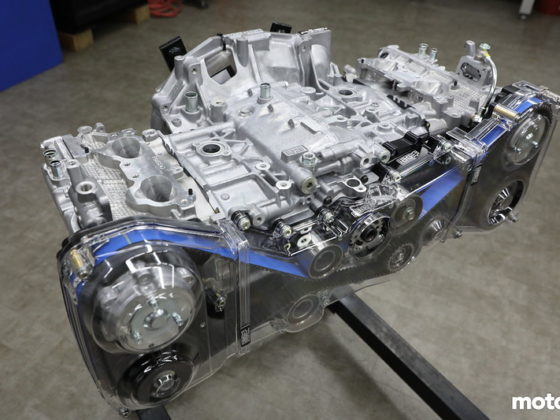 The Forgeline VX1-6 is aptly named due to the six long “Y-spokes” that wrap around the lug hole area. This split spoke design has been used throughout motorsports for a reason, because it’s one of the best fundamental designs for an aluminum wheel.
The Forgeline VX1-6 is aptly named due to the six long “Y-spokes” that wrap around the lug hole area. This split spoke design has been used throughout motorsports for a reason, because it’s one of the best fundamental designs for an aluminum wheel.
 The root of the spokes tie into the center hub while a deep concave profile and radially-chamfered outer lip gives the VX1-6 a sharper, edgier look to it.
The root of the spokes tie into the center hub while a deep concave profile and radially-chamfered outer lip gives the VX1-6 a sharper, edgier look to it.
 The rear wheel is a massive 13” wide, with specs of 19×13 +53 finished in transparent smoke. Meanwhile, the fronts are 18×10.5 +46.
The rear wheel is a massive 13” wide, with specs of 19×13 +53 finished in transparent smoke. Meanwhile, the fronts are 18×10.5 +46.
 It’s not easy to maintain wheel stiffness with a massive wheel barrel with such a high offset. That’s why a good design and manufacturing process is the key to success.
It’s not easy to maintain wheel stiffness with a massive wheel barrel with such a high offset. That’s why a good design and manufacturing process is the key to success.
 Born from endurance racing, the Michelin Pilot Super Sport (PSS) was initially introduced as an OEM tire for many performance cars including the Ferrari 599 GTO, which was Ferrari’s fastest road car ever at the time. For our Project Viper, we increased the front treadwidth to 285/35-18.
Born from endurance racing, the Michelin Pilot Super Sport (PSS) was initially introduced as an OEM tire for many performance cars including the Ferrari 599 GTO, which was Ferrari’s fastest road car ever at the time. For our Project Viper, we increased the front treadwidth to 285/35-18.
 The rear PSS comes out in the same Gen-3 Viper rear size of 345/30-19. Compared to a dollar bill, this tire is insanely wide with very few tires on the market that are wider.
The rear PSS comes out in the same Gen-3 Viper rear size of 345/30-19. Compared to a dollar bill, this tire is insanely wide with very few tires on the market that are wider.




9 comments
gorgeous wheels and tires. not sure if i missed it being mentioned in the article, but why didn’t you go with the PS4? I love the michelin feel when they are new, but they age and crack SO fast, even in a garaged car in Los Angeles. They dry rot and plasticize within 5 years easily. I know its recommended to get new tires every 6 years or whatever, but its a bit dramatic with Michelin from the sets I’ve interacted with.
The PS4S was not available in the Viper size at the time of the install. The previous “C1” Viper compound was well over 5 years old and did not have dry rot issues, neither have a lot of the PS2 or PSS tires that i’ve personally used.
Damn, so much tread left on that old tire. Do you even drive this car?
It’s not always the wear but the age of the tire that matters. The tires were old and needed replacing; plus the tread was down to the wear marks and the outer shoulders were worn completely; close to cords, and would not last much longer on track.
Yeah, because we know what happens when a Viper get a blowout at high speed…
Hey, great DIY writeup. Thanks. Are you going to continue on that project any further?
So much left 😉 brake distribution, steering cooler, track testing … what about a carbon drive shaft and other cool stuff to bring that thing back into competition to today’s cars?!
Hey! I’ve just finished reading all the 16 parts of your Viper story and I must say I’m really impressed with the quality of material (all the measurements before-after and etc). Keep it up! Can’t wait to read the next parts.
Thank you for the kind words!
I just bought a 2002 RT/10, and I have greatly enjoyed these articles, especially with how you reference all years of the 2nd gen cars, so the information is very relevant to me. I also have a set of VX1’s on my car. The previous owner set it up for track use, which I won’t be doing regularly myself. I look forward to seeing how you upgrade the brakes! Will you invest in headers or any additional work to the motor? I would love to upgrade my cam to get that lumpy 708 idle.